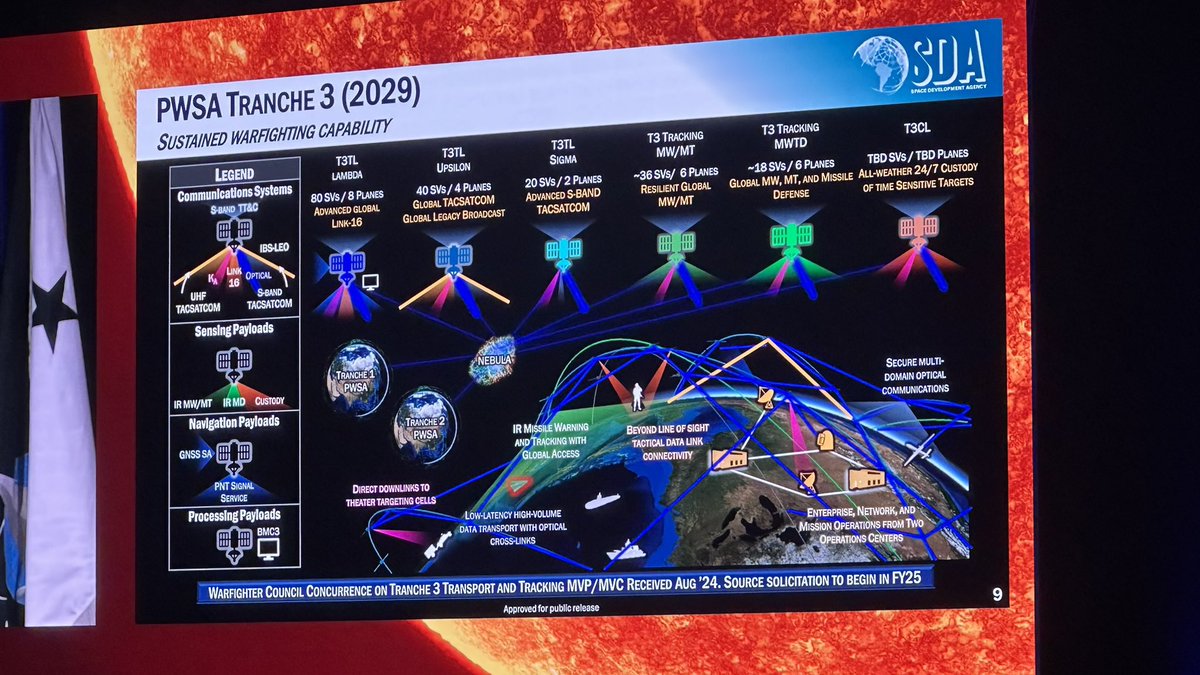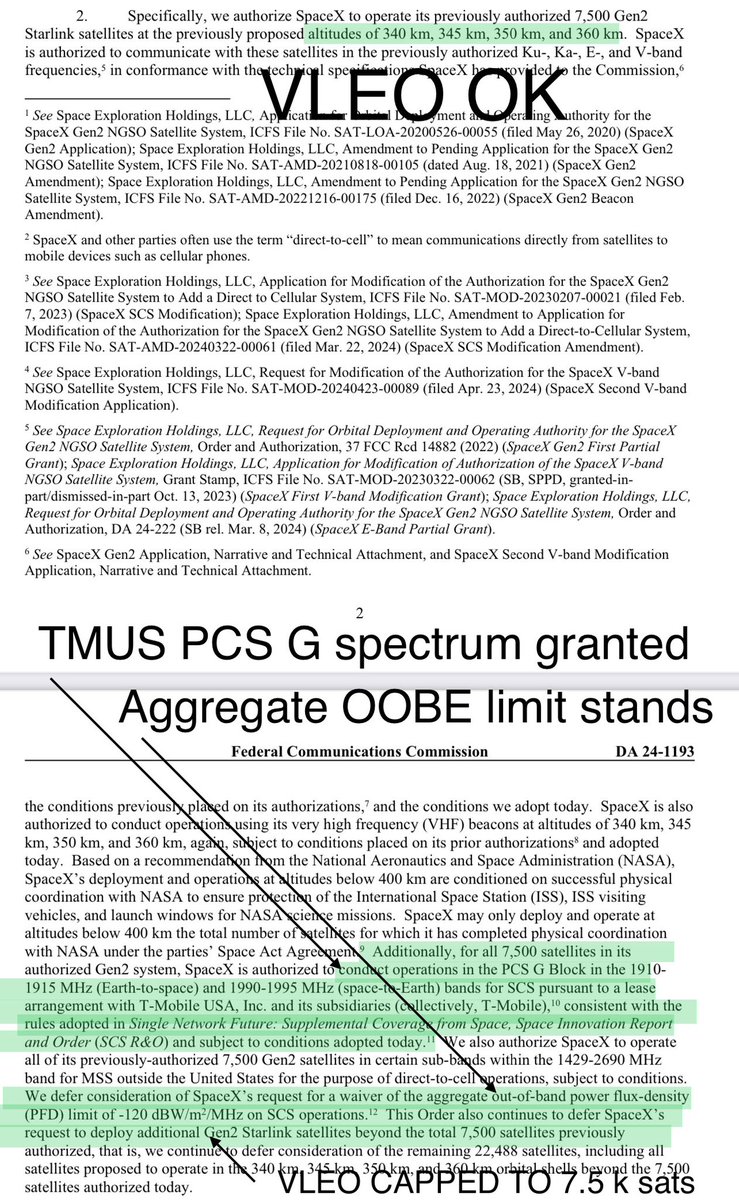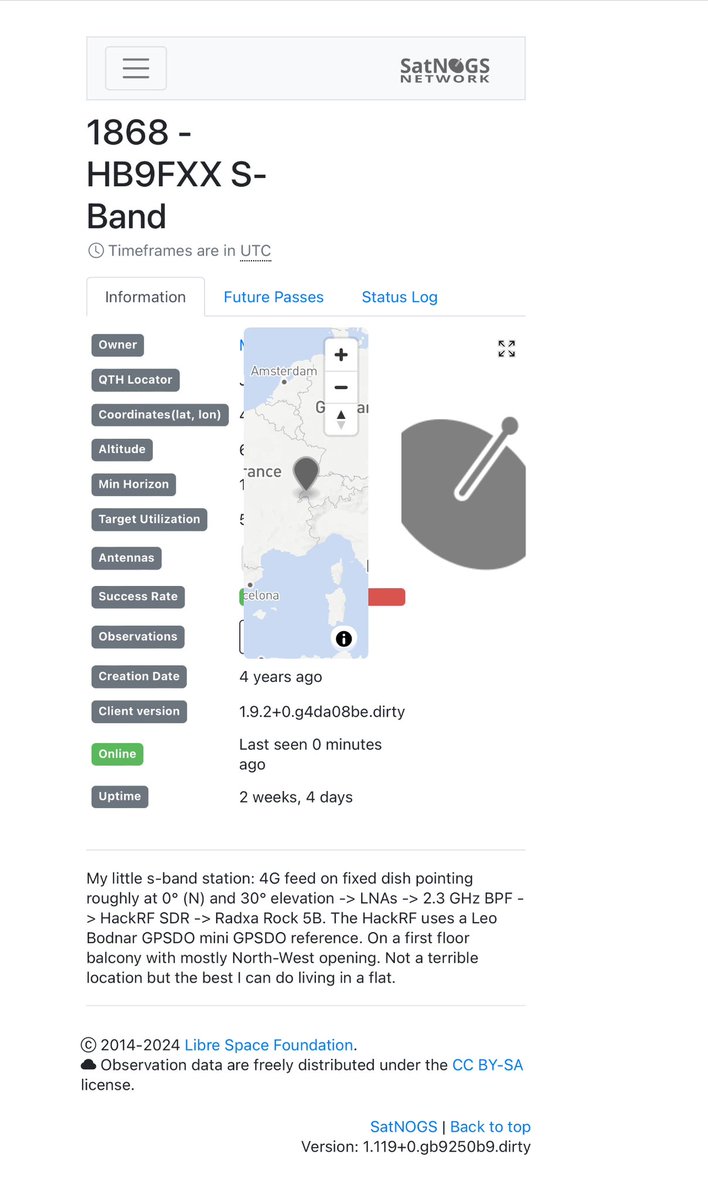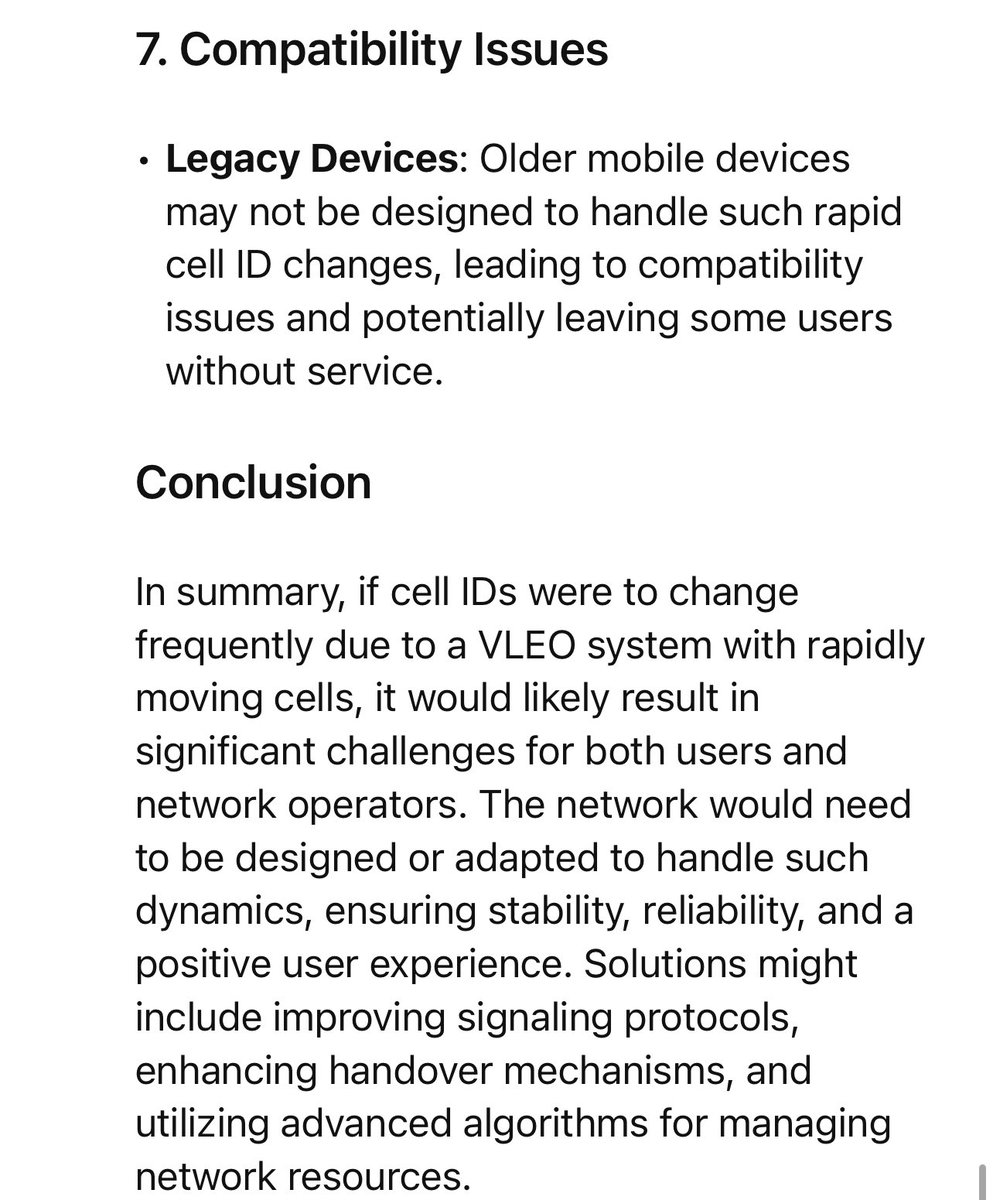Let us look at the SDA opportunity.
What does $ASTS have that SDA might seek?
How does that fit with PWSA architecture and timelines.
Any hints there is a fit or work in progress between the two space architectures?
1/n

What does $ASTS have that SDA might seek?
How does that fit with PWSA architecture and timelines.
Any hints there is a fit or work in progress between the two space architectures?
1/n


AST was selected to be part of HALO pool. From this pool they can be awarded contract for 2 space vehicles.
This is when AST themselves became a prime DoD partner.
In parallell we know that another AST partner which also has a prime contract staus with the DoD are testing OISL
This is when AST themselves became a prime DoD partner.
In parallell we know that another AST partner which also has a prime contract staus with the DoD are testing OISL

That other partner is Fairwinds.
They integrate as part of SBIR OSIL direct to Phase 2 a Skyloom OISL on a ASTS Flat Sat Simulator, with a 12-mo demonstration integrating the OISL onto the Sat and test events to verify interoperability between ASTS payload and an SDA OISL.
3/n
They integrate as part of SBIR OSIL direct to Phase 2 a Skyloom OISL on a ASTS Flat Sat Simulator, with a 12-mo demonstration integrating the OISL onto the Sat and test events to verify interoperability between ASTS payload and an SDA OISL.
3/n
It’s easy to see how these two contracts are consecutive steps towards the same end goal.
Fairwinds ”effort will produce a study on how to integrate an SDA OISL onto a commercial LEO satellite and test data that verifies the interoperability between the two architectures.”
4/n


Fairwinds ”effort will produce a study on how to integrate an SDA OISL onto a commercial LEO satellite and test data that verifies the interoperability between the two architectures.”
4/n



And the HALO contract sets the stage for the next step, which is Space Vehicles launched under T2 DES a demonstrator tier of the PWSA to find new tech for the Tranche 3 layers.
5/n
5/n
Which, as there evidently are two steps towards a common goal already iniyiayed, brings us to ponder what the third step might be? And what the end goal might be?
This is where this thread shifts from known facts to more of speculation and hints.
T2DES seeks tech for T3
6/n
This is where this thread shifts from known facts to more of speculation and hints.
T2DES seeks tech for T3
6/n

So let us look at T3.
Let’s start with the Legend and try and identify capabilities that an AST BlueBird wpuld have after succesful Skyloom OISL integration
7/n
Let’s start with the Legend and try and identify capabilities that an AST BlueBird wpuld have after succesful Skyloom OISL integration
7/n

First IBS-L a broadcast system in UHF.
Let’s flag that as possible because $ASTS BlueWalker 3 is transmitting in DMSP frequencies already another US program. And they’re in the approximate same frequenzy range. So we know AST satellites already have that UHF capability.
8/n
Let’s flag that as possible because $ASTS BlueWalker 3 is transmitting in DMSP frequencies already another US program. And they’re in the approximate same frequenzy range. So we know AST satellites already have that UHF capability.
8/n
https://twitter.com/catse___apex___/status/1803772729968955515
Then I get this from the communications Legend in Tranche 3 transport layer.
Nota Bene Tranche 3 has more layers and a software defined phased array has more use cases than coms.
But let’s stick with coms not to speculate too wildly.
9/n
Nota Bene Tranche 3 has more layers and a software defined phased array has more use cases than coms.
But let’s stick with coms not to speculate too wildly.
9/n

Let’s now compare and contrast.
T3TL Upsilon is a good match for the known capabilities of an OISL equipped AST satellites.
One thing not full match.. Which is the Ka band fixed satellite service / feeder link
AST has a Q feeder link.
But wait..
10/n


T3TL Upsilon is a good match for the known capabilities of an OISL equipped AST satellites.
One thing not full match.. Which is the Ka band fixed satellite service / feeder link
AST has a Q feeder link.
But wait..
10/n



Part of Q band is actually also Ka band.
And 70cm Tendeg steerable feederlink antenna AST is using is capable of both bands.
AST requesting from 37.5 GHz which matches both bands.
11/n

And 70cm Tendeg steerable feederlink antenna AST is using is capable of both bands.
AST requesting from 37.5 GHz which matches both bands.
11/n


Meanwhile the DoD just initiated opening up their spectrum to co-equal access between the military and commercial companies around this intersection of Ka and Q.
Hat tip @no_privacy Thank You for sharing that proceeding w me.
So in a way the capabilities are a full match.
12/
Hat tip @no_privacy Thank You for sharing that proceeding w me.
So in a way the capabilities are a full match.
12/

40 Upsilon will be ordered.
Not unusual that these are awarded to two different companies, nor that the number is expanded.
But at least a potential for a 20 sat order. At ~20 Mn each that is a ~400 Mn USD order potential.
13/

Not unusual that these are awarded to two different companies, nor that the number is expanded.
But at least a potential for a 20 sat order. At ~20 Mn each that is a ~400 Mn USD order potential.
13/


” But.. ASt sats are for 3GPP cellular communications!!”
No, $ASTS FPGA phased arrays are pretty indifferent to coms protocols and it is just the Nokia -terrestrial- AirScale gNodeB that is
Think of satellite as a mirror that can reflect both civilian and DoD waveforms.
15/
No, $ASTS FPGA phased arrays are pretty indifferent to coms protocols and it is just the Nokia -terrestrial- AirScale gNodeB that is
Think of satellite as a mirror that can reflect both civilian and DoD waveforms.
15/
$ASTS is building a vertically integrated high throughput production line.
That will have economy of scale that is very attractive to DoD.
There are also _many_ non coms use cases. MPAR, SIGINT, Weather radio occultation, MIMO-SAR,/FF-SAR that speaks to other T3 layers.
16/
That will have economy of scale that is very attractive to DoD.
There are also _many_ non coms use cases. MPAR, SIGINT, Weather radio occultation, MIMO-SAR,/FF-SAR that speaks to other T3 layers.
16/
Here is when DoD starts shopping for T3 layer.
The two T2 DES satellites will come long before that.
17/
The two T2 DES satellites will come long before that.
17/

There are other less known facts like those to be found in MICRONSAT-2 filing.
A one year old still active ITU filing re: SpaceMobile constellation.
It is a filing for a layered architecture. Noteably a 1400 km shell.
SDA operates in this neighbourhood: 700-1200. AST 700-1400.
A one year old still active ITU filing re: SpaceMobile constellation.
It is a filing for a layered architecture. Noteably a 1400 km shell.
SDA operates in this neighbourhood: 700-1200. AST 700-1400.

As theodorus tracks the Block1s are spacing out for a DoD non coms use case testing phase. Prior to communications testing.
Take note how these are spaced along track at each 1/4 of a full orbit.
Take note how these are spaced along track at each 1/4 of a full orbit.
https://twitter.com/theodorusatheos/status/1865785565326573831
This cat while on rodent control deep in ITU archives stumbled on this part of the MICRONSAT-2 filing a year ago.
It is interesting because it shows AST asking ITU coordination for 20 FPGAs / block1 spaced for the DoD non coms case one year ago.
And 328 block 2 spaced for coms
It is interesting because it shows AST asking ITU coordination for 20 FPGAs / block1 spaced for the DoD non coms case one year ago.
And 328 block 2 spaced for coms

I hoped to show with this thread that two 2017 brain childs of AST SpaceMobile & DARPA Blackjack (later SDA PWSA) might have a higher degree of mutual coordination and planning of contract awards, technology roadmaps etc than what is publicly apparent.
They are a perfect match.
They are a perfect match.

This belongs here.
https://twitter.com/sempercitiussda/status/1867667343666450947
• • •
Missing some Tweet in this thread? You can try to
force a refresh

































